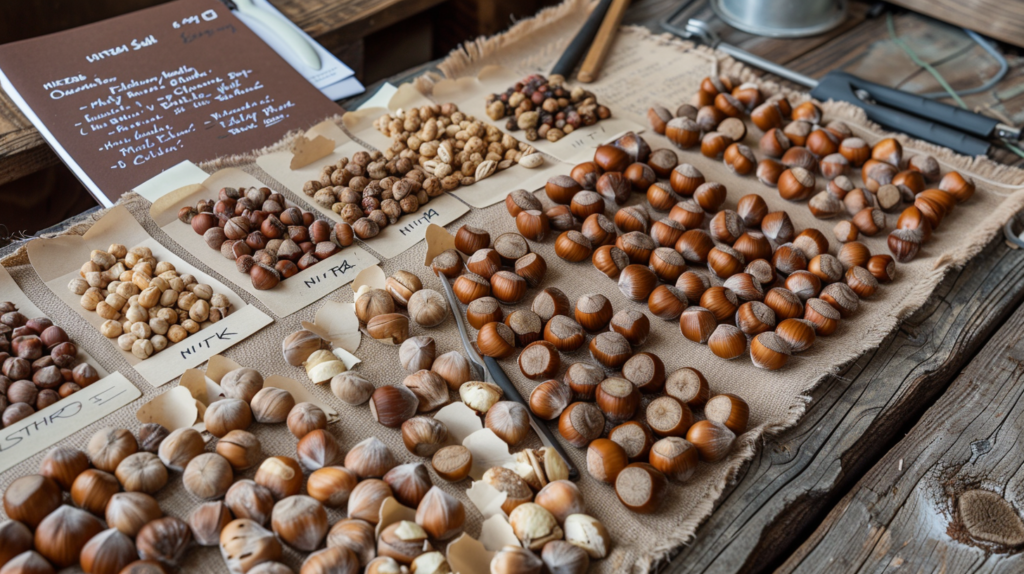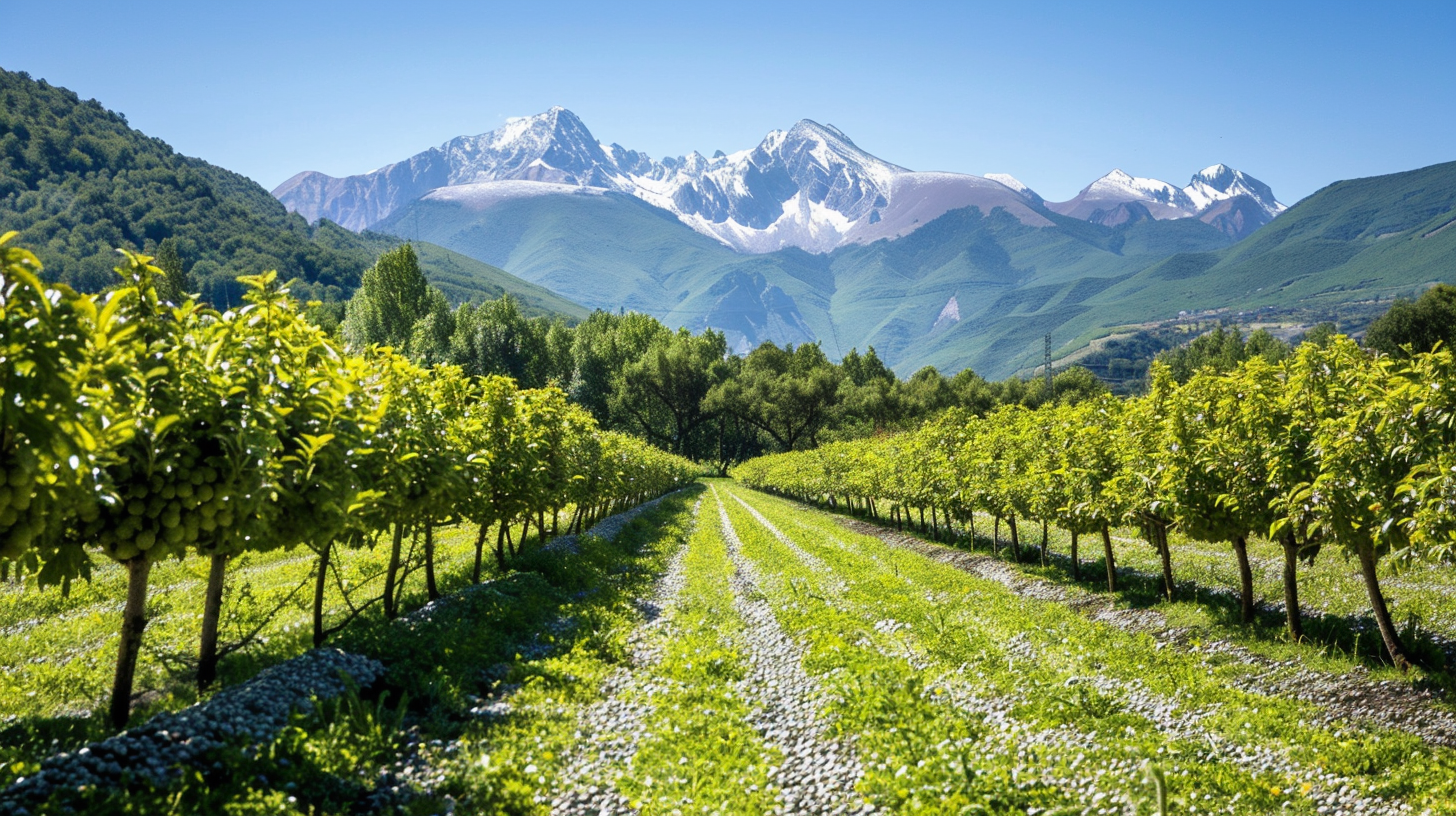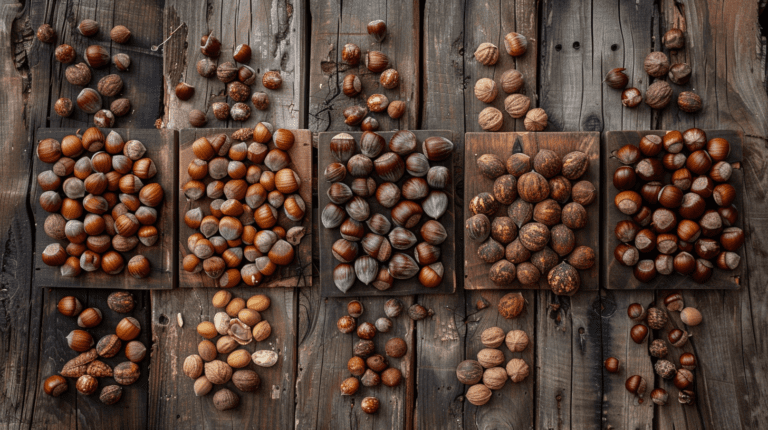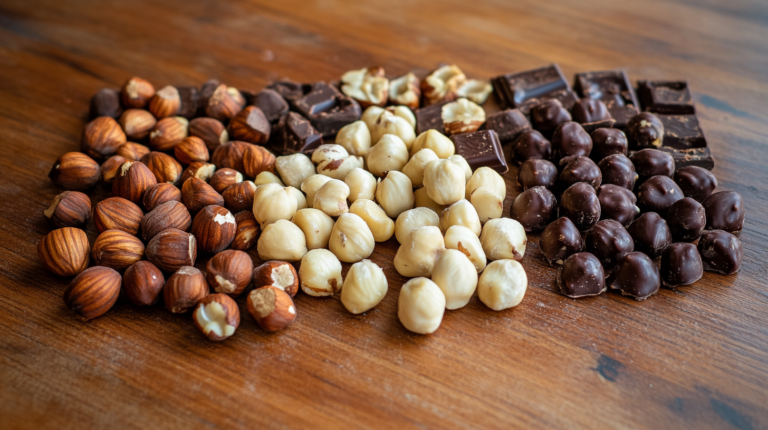Choosing Cold-Hardy Hazelnut Varieties for Northern Climates
Selecting the appropriate hazelnut variety for specific climates, particularly cold climates, is crucial for successful cultivation. Hazelnuts have different varieties that can adapt to various climate conditions, ensuring that growers can achieve good yields even in challenging environments. This article expands on the attributes of American hazelnuts, Beaked hazelnuts, NITKA hazelnuts, and Grimo Northern Selections, and offers guidance on optimizing hazelnut production in cold climates.
American Hazelnut (Corylus americana)
American hazelnuts are extremely cold-hardy, thriving in USDA zones 4-9 (University of Minnesota, n.d.). They are native to eastern North America and are well-adapted to its climate, which includes cold winters and warm summers. Here are key characteristics of American hazelnuts:
- Cold Hardiness: American hazelnuts can withstand extremely cold temperatures, making them suitable for a wide range of environments within their USDA zone range (University of Minnesota, n.d.).
- Adaptability: They tolerate a wide range of soil conditions and can thrive in partial shade, though they perform best with some sun exposure (University of Minnesota, n.d.; Strawberry Moon Farm, n.d.).
- Disease Resistance: These hazelnuts are particularly resistant to Eastern Filbert Blight (EFB), a significant concern for hazelnut growers (Strawberry Moon Farm, n.d.).
- Nut Production: Although the nuts are smaller compared to European varieties, American hazelnuts are fast-growing and can start producing nuts in 2-8 years (Strawberry Moon Farm, n.d.).

Beaked Hazelnut (Corylus cornuta)
Beaked hazelnuts are among the most cold-hardy hazelnut species, capable of surviving temperatures as low as -50°C (-58°F) (Hardy Fruit Trees, n.d.). They are native to Canada and thrive in USDA zones 2-4, making them ideal for extremely cold regions. Key features include:
- Cold Tolerance: They are highly resilient to extreme cold, which makes them suitable for northern climates (Hardy Fruit Trees, n.d.).
- Adaptability: Beaked hazelnuts are moderately shade-tolerant but prefer some sun for higher yields. They are also more disease-resistant than European hazelnuts (Hardy Fruit Trees, n.d.).
- Nut Characteristics: The nuts are small but tasty, and the plants can be used to form attractive hedges due to their ability to be planted closely together (Hardy Fruit Trees, n.d.).
NITKA Hazelnut
The NITKA hazelnut is a cold-hardy hybrid cultivar known for its exceptional performance in zone 4a and colder (ZNutty, n.d.). This variety has been tested for over 25 years and shows remarkable resistance to EFB and excellent winter hardiness. Key attributes include:
- Cold Hardiness: NITKA hazelnuts exhibit robust winter hardiness, making them reliable for very cold regions (ZNutty, n.d.).
- Disease Resistance: They show no signs of Eastern Filbert Blight, ensuring healthier growth and better yields (ZNutty, n.d.).
- Nut Characteristics: NITKA hazelnuts produce medium-sized nuts with a high kernel ratio of 52-55%, making them commercially attractive (ZNutty, n.d.).
- Pollination: This variety serves as a universal pollen donor for other cold-hardy cultivars, enhancing cross-pollination and overall yield (ZNutty, n.d.).
Grimo Northern Selections
Grimo Northern Selections are a group of hazelnut cultivars selected for superior cold hardiness in zones 4-5 (Grimo Nut Nursery, 2019). These varieties include ‘Gamma’, ‘Alex’, ‘Farris G17’, ‘Dawn’, and ‘Northern Blais’, sourced from cold regions like Saskatchewan, Quebec, and parts of Asia. Important characteristics include:
- Cold Hardiness: These selections are specifically bred for resilience in colder climates (Grimo Nut Nursery, 2019).
- Nut Production: While still being evaluated, these varieties show promise for consistent nut production in colder areas (Grimo Nut Nursery, 2019).
Climate-Resilient Practices for Hazelnut Cultivation
To optimize hazelnut production in cold climates, growers should implement climate-resilient practices. These practices enhance the health and productivity of hazelnut orchards by addressing the challenges posed by cold weather.
Site Selection
Choosing the right site is crucial for minimizing the impact of frost and other climate-related risks. Avoid planting hazelnuts on land with southern exposures in regions prone to frost, as this can prevent premature blooming (USDA, n.d.). Instead, select sites with good air drainage to reduce the risk of frost damage.
Irrigation
Efficient water management is essential, particularly in areas with variable precipitation. Using drip irrigation systems can increase water use efficiency, ensuring that water reaches the root zone directly and reducing wastage (USDA, n.d.). Scheduling irrigation based on soil moisture monitoring and weather forecasts can further optimize water use.
Soil Management
Maintaining soil health is critical for the long-term productivity of hazelnut orchards. Implementing cover crops can help with soil moisture absorption and reduce soil erosion (USDA, n.d.). Cover crops also improve soil fertility by adding organic matter and enhancing soil structure.
Pest and Disease Management
Integrated Pest Management (IPM) strategies are essential for controlling pests and diseases while minimizing the use of chemical pesticides. IPM combines biological, cultural, and chemical control methods to manage pest populations effectively.
- Biological Control: Use natural predators and parasites to control pest populations.
- Cultural Control: Practices such as crop rotation, sanitation, and pruning reduce pest habitats.
- Chemical Control: Apply pesticides judiciously based on monitoring and threshold levels.
Economic Considerations
Establishment and Maintenance Costs
Establishing a hazelnut orchard involves significant initial investment, including land acquisition, site preparation, planting materials, and irrigation systems. Maintenance costs encompass labor, fertilizers, pest management, and pruning.
- Land Acquisition: Costs range from $5,000 to $12,000 per acre (Julian et al., 2011).
- Setup Costs: Equipment, irrigation, and infrastructure setup costs range from $10,000 to $50,000 (Julian et al., 2011).
Production Costs and Revenue
Hazelnut trees typically begin producing nuts in the third to fourth year after planting, with full production achieved by the eighth to tenth year. Annual revenue from hazelnut production can vary widely depending on the variety, yield, and market conditions.
- Annual Revenue: Well-managed orchards can generate annual revenues ranging from $50,000 to $500,000, with profit margins between 20% and 40% (Julian et al., 2011).
Value-Added Processing
Investing in value-added processing equipment, such as roasters and grinders, can significantly enhance profitability. Value-added products like roasted hazelnuts, hazelnut butter, and hazelnut oil can attract premium prices in the market.
- Processing Equipment: Costs range from $3,000 to $25,000, depending on the scale and complexity of processing operations (Julian et al., 2011).
Future Prospects
Climate Change Adaptation
Climate change poses significant challenges to hazelnut production, including increased variability in temperature and precipitation, more frequent extreme weather events, and shifts in pest and disease dynamics. Adapting to these changes requires innovative approaches and resilient management practices.
- Breeding Programs: Developing new hazelnut varieties with improved tolerance to climate stressors such as drought, heat, and cold is essential for sustaining production (USDA, n.d.).
Technological Advancements
Advancements in agricultural technology offer promising opportunities for enhancing hazelnut production. Precision agriculture technologies, such as remote sensing, GPS, and data analytics, can optimize orchard management practices and improve productivity.
- Remote Sensing: Monitors crop health, soil moisture, and pest populations.
- Data Analytics: Optimizes yield predictions and improves supply chain management.
Market Expansion
The global market for hazelnuts is expanding, driven by increasing consumer demand for healthy snacks and plant-based protein sources. This growth presents opportunities for hazelnut producers to increase production and explore new markets.
- Marketing Strategies: Developing robust marketing strategies and forming partnerships with food manufacturers can help capitalize on the growing demand for hazelnuts.
- Product Diversification: Value-added processing and product diversification can enhance market opportunities and profitability.
Policy Support
Government policies and support play a crucial role in the growth of the hazelnut industry. Subsidies, grants, and research funding can help farmers adopt new technologies and practices, improve productivity, and reduce costs.
- Collaboration: Collaborative efforts between governments, research institutions, and industry stakeholders can drive innovation and ensure the sustainability of the hazelnut industry.
Conclusion
Choosing the right hazelnut variety for cold climates is essential for successful cultivation. American hazelnuts, Beaked hazelnuts, and hybrid varieties like NITKA offer excellent cold hardiness and disease resistance. Implementing climate-resilient practices, such as site selection, efficient irrigation, and soil management, can enhance the success of hazelnut cultivation in cold climates.
Economic considerations, including establishment and maintenance costs, production costs, and value-added processing, are critical for maximizing profitability. Future prospects for hazelnut production are promising, with opportunities for climate adaptation, technological advancements, market expansion, and policy support.
By selecting the appropriate varieties and adopting resilient practices, hazelnut producers can optimize yields, enhance profitability, and contribute to the sustainability of the hazelnut industry.
References
Grimo Nut Nursery. (2019). Hazelnut trees for zones 4-8. Retrieved from http://www.grimonut.com/shared/media/editor/file/Hazelnut%20Trees%20for%20Zones%204-8%202019.pdf
Hardy Fruit Trees. (n.d.). Beaked hazelnut (Corylus cornuta). Retrieved from https://www.hardyfruittrees.ca/produit/nut-trees-grown-in-canada/beaked-hazelnut-corylus-cornuta/
Julian, J. W., Strik, B. C., & Yang, W. Q. (2011). Economics of hazelnut production: The costs. Oregon State University. Retrieved from https://agsci.oregonstate.edu/sites/agscid7/files/oaeb/pdf/aeb0068.pdf
Strawberry Moon Farm. (n.d.). The American hazelnut (Corylus americana): A versatile native nut. Retrieved from https://strawberrymoonfarm.com/wordpress/the-american-hazelnut-corylus-americana-a-versatile-native-nut/
University of Minnesota. (n.d.). American hazel (Corylus americana). Retrieved from https://trees.umn.edu/american-hazel-corlyus-americana
USDA. (n.d.). Climate-resilient hazelnuts in Oregon and Washington. Retrieved from https://www.climatehubs.usda.gov/hubs/northwest/topic/climate-resilient-hazelnuts-oregon-and-washington
ZNutty. (n.d.). NITKA hazel layer: The best hazelnut for cold hardy regions of North America. Retrieved from https://znutty.com/products/copy-of-nitka-hazel-layer-the-best-hazelnut-for-cold-hardy-regions-of-north-america






